Interviews with experts and opinion leaders from our research network
What is the universe made of? How did the universe begin, and will it end at some point? There is no limit to our unanswered questions about the universe. Thanks to technological advances in instrumentation for observations and measurements, and progress in simulation in recent years, however, new discoveries about the universe, like the Higgs boson, are being made one after another. It is fair to say that science is truly penetrating the shroud of mystery surrounding the universe. On this occasion we spoke with Dr. Hitoshi Murayama, Director of Kavli Institute for the Physics and Mathematics of the Universe at the University of Tokyo, about research on mysteries of the universe and the importance of fundamental research in maintaining Japan’s competitiveness.
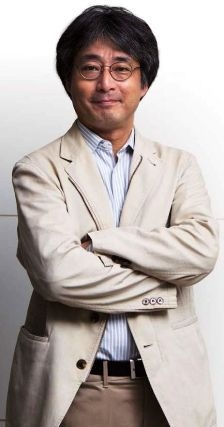
Born in Tokyo in 1964. Professor of physics at the University of California, Berkeley. Since 2007, also the director of Kavli Institute for the Physics and Mathematics of the Universe. Member of the American Academy of Arts and Sciences (AAAS) as well as the Science Council of Japan.
Brief personal history
In 1991, completed the doctorate program at the University of Tokyo’s School of Sciences and received a Doctorate of Science. Area of specialty was particle physics. Worked as a research associate of the Faculty of Science, Tohoku University. Was a postdoctoral fellow at Lawrence Berkeley National Laboratory. Served as associate professor and professor of the Physics Department at the University of California, Berkeley before becoming the MacAdams Professor of Physics. Served as a member of the School of Natural Sciences at the Institute for Advanced Study in Princeton (2003-2004). Received the Nishinomiya Yukawa Commemoration Prize in 2002. In 2007 took up the position of Director of Kavli Institute for the Physics and Mathematics of the Universe at the University of Tokyo, established through
the World Premier International Research Center Initiative of the Ministry of Education, Culture, Sports, Science and Technology, and holds that position today.
Research themes
The main themes of Dr. Murayama’s research are supersymmetry theory, neutrinos, the early universe, and phenomenology in accelerator experiments. As a young leader in elementary particle theory, he also actively engages in outreach activities including presenting lectures for the general public as he continues to pursue advanced research.
Publications
Among his many publications are What is the Universe Made of? (Gentosha Shinsho), Is There Really Only One Universe?, and Why Do We Exist in the Universe? (Kodansha Bluebacks)D
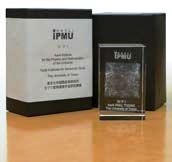
The photo on the right is a paperweight created by the Institute showing a model of the structure of the Universe, where each side indicates the span of 200 million light years.
Kawamura: I believe that your father used to be a principal researcher at the Hitachi Central Research Laboratory and that you grew up in Hitachi company housing. Your father was also one of the organizers of the First International Symposium on Foundations of Quantum Mechanics in the Light of New Technology (ISQM), the first of the series of academic conferences on quantum mechanics established by Hitachi. I heard that you also assisted your father in this event. What is your impression of the Central Research Laboratory?
Murayama: Before I entered the elementary school, our family lived in company housing in Hachioji. After that we moved to Kodaira where we again lived in company housing, so I remember growing up always living in close proximity to the Central Research Laboratory. Among the memories that really stand out in my mind are the summer festivals the Central Research Laboratory held every year. My father took me there on a number of occasions. There were many night stalls, Bon Odori dancing and fireworks displays. The atmosphere was very festive. So, while the Central Research Laboratory happened to be my father’s workplace, I thought of it more as a park where people on occasion could go for recreation.
Kawamura: The grounds of the Cent ral Research Laboratory are open to the public a number of times a year, and the gardens and forest there are rich in natural beauty so it has become a place of rest and recreation for residents in the area. So, what was your impression of your father’s work?
Murayama: It seemed to me that he was doing pretty much what he wanted to do and really enjoying his work. Even when he was at home, he always kept himself busy doing things like calculations or writing as he listened to music with headphones on. Even as a child I somehow felt that my father’s workplace was somewhat different from the ordinary companies where my friends’ fathers worked. At the same time, my impression of Hitachi was that it was a company that made electrical goods such as TVs and light bulbs. Therefore, in March 2014 when I attended the Residents Science Lecture Meeting of the Physics Society at the Physical Society of Japan 2014 Annual (69th) Meeting, where you spoke, I was very surprised to hear you say, “Hitachi is a social infrastructure company.”
Kawamura: I believe there are more than a few people who view Hitachi simply as a maker of consumer electronics but Hitachi has been very much involved in social infrastructure since its founding. While we have many B2B (business-tobusiness) models, the average person may have no idea of such a business model, unfortunately. By the way, did your father have an influence on your decision to specialize in particle physics?
Murayama: I believe so. Children often ask their parents simple questions like “Why is the sky blue?” When I asked this kind of question to my father, he always gave me a proper answer such as, “It’s because when the light from the sun shines on the earth, only the blue light, which has short wavelengths, is dispersed in the atmosphere.” There were also times when he told me, “Go look it up yourself,” and bought me books to do that. Because I grew up in an environment where I was able to receive sound explanations whenever I wondered about things, I believe my curiosity for natural science continued to grow over the years. If we keep dividing things around us into smaller constituents, we eventually get to the atoms, the nuclei of an atom, and elementary particles. The question, then, is what will we find if we take our investigation even further? I wanted to know the ultimate structure of things that exist. Even now, I continue to ask simple questions like that. However, during my years as a university student in the department of physics, I did not attend classes regularly and spent most of my time playing the double bass in the university orchestra.
Kawamura: After holding various posts both in Japan and overseas, you became the first director of Kavli Institute for the Physics and Mathematics of the Universe in 2007, and concurrently you serve as Professor of Physics at the University of California, Berkeley. I understand that you originally studied particle physics. Could you please say how you became involved in the world of astrophysics?
Murayama: When I entered university, I decided to major in particle physics because I wanted to understand what particles were, as the ultimate constituents comprising matter. This interest of mine actually started to expand with my astonishment when looking at the data from the Cosmic Background Explorer (COBE), an observation satellite (cosmic background radiation explorer) the year after finishing my graduate studies. This data was a snapshot of quantum fluctuations in the universe,*1 which became the seeds of the structure of the universe including the Milky Way. These quantum fluctuations proved that the universe rapidly expanded from a micro world through the Big Bang. I was truly astonished to find out that the universe today, which is 13.7 billion light- years old, was originally smaller than a single atom. At that time, I realized that if the expansive universe was truly connected to a miniscule atom, I needed to consider the two as a single entity.
Kawamura: What kind of research are you doing at Kavli Institute for the Physics and Mathematics of the Universe?
Murayama: When the institute was launched, we presented the following five questions to the Ministry of Education, Culture, Sports, Science and Technology: What is the universe made of ? How did the universe begin? What is the destiny of the universe? What are the rules that govern the universe? and, Why do we exist in the universe? These questions are, in some sense, simple questions that people have been asking over the millennia ever since the beginning of humankind. At last science has advanced enough to the stage where solving these mysteries is within reach. When we carefully observe the universe, we find that it is not uniform in structure but is more like a mesh-like filament structure. There are places where galaxies are lined up in spiral shapes, and places where there are sudden gaps in density. By observing such a large-scale structure as that of the universe and using computers to recreate various conditions, we are investigating the origin of the universe. We are also doing research that involves measuring the distribution of dark matter that spreads in outer space by utilizing the characteristic of what is called a gravitational lens to bend light.
Kawamura: I understand that the institute is attracting attention for the very high quality of its research and that it not only secures competitive funds*2 but also takes advantage of sponsorship for part of its budget.
Murayama: Our annual budget is about 1.3 billion yen, and at present, the majority of that comes from competitive funds. However, it would be difficult to continue research on a permanent basis if we relied solely on grants-inaid.Therefore, looking for sponsors is one of my most important duties as the director of the Institute. One of our sponsors is Kavli Foundation in the United States. Rather than incorporating the donation we received from this foundation directly into the budget, we have invested it as an endowment and utilize the earnings from this investment. We are gradually increasing the number of sponsors at present, and recently we received the offer of an endowed chair from Hamamatsu Photonics K.K., which manufactures electronic components and equipment for photon detection.
Kawamura: Since you rely on competitive funds, I imagine that you have to achieve remarkable results within a limited period.
Murayama: Essentially, you could say that my position is like that of the president of a small to mid-size company that operates on an annual budget of a billion and some hundred million yen. Almost the entire budget comes from the government and, therefore, we have zero savings. Unless we demonstrate noteworthy results, government support will eventually dry up. We are like a team fighting with its back to the wall. That said, if we are able to achieve adequate results, we will be able to continue carrying on our research in an ongoing manner. In fact, at present, we are at a stage where various results are beginning to emerge.
Notes
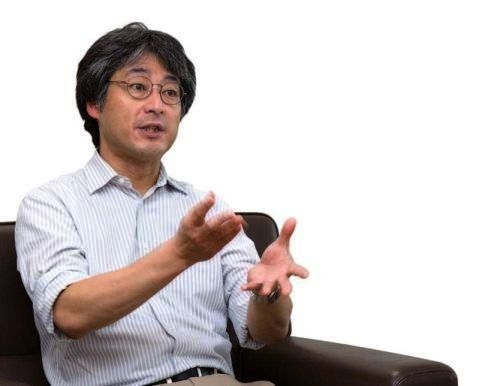
Kawamura: Dr. Murayama, I believe you are also involved in the planning of the International Linear Collider, which I understand is very useful for performing experiments in particle physics. Could you elaborate on its purpose?
Murayama: The discovery of the Higgs boson*3 two years ago caused a huge sensation. Every corner of the entire universe is supposedly packed with these elementary particles, which play an extremely vital role in providing mass to electrons. In fact, without these particles, electrons would lose mass and fly away at the speed of light. Essentially, the presence of Higgs bosons interferes with the movement of electrons, making them move slowly and enabling them to circle within atoms.
Therefore, if Higgs bosons suddenly disappeared from the universe in one big puff, electrons would suddenly start flying at the speed of light, and our bodies would disintegrate into pieces in a billionth of a second. Despite their vital role and omnipresence, we still know very little about their true nature. Investigating the true nature of these Higgs bosons is also one of the main roles of the Linear Collider. I believe shedding light on this mystery will result in opening doors to the next world.
Kawamura: What exactly do you mean by the “next world?”
Murayama: Our world consists of all kinds of particles such as electrons and quarks, and the particles that have been discovered to date all have the property of spinning or rotating. Higgs bosons, on the other hand, do not spin. Spinning particles appear different depending on the angle from which they are observed. In other words, these particles have distinct features. However, the Higgs boson is smooth, lacking in features, and nondescript. It is hard to imagine that there is only one kind of particle having such properties. It is more likely that there are a multitude of cousins or relatives of this particle with similar properties throughout the universe. Therefore, I believe further investigation of the Higgs boson will result in further breakthroughs in particle physics.
However, the Higgs boson is a particle that disintegrates easily and is very difficult to observe. The Higgs boson was discovered by an electron accelerator called the LHC (Large Hadron Collider) of the European Organization for Nuclear Research (CERN)*4 located in the suburbs of Geneva. The LHC did not discover the actual particle but captured a fragment of it. After careful investigation, the fragment was determined to be part of a Higgs boson. To be able to study it in more detail, we have to create a large number of Higgs bosons using an electron accelerator with more enhanced energy and observe them closely.
Furthermore, the Linear Collider accelerates electrons and positrons, causing them to collide with each other. By conducting this experiment repeatedly, I believe we may be able to catch a glimpse of the moments one trillionth of a second after the Big Bang, which triggered the beginning of the universe. No accelerator, no matter how high its energy, can recreate the Big Bang itself, but an accelerator may be able to recreate a “Little Bang” instead. By doing this, I believe we will be able to extend our understanding closer to the beginning of the universe.
Kawamura: Is it more difficult to know about the beginning of the universe rather than its end?
Murayama: Knowing about the end of the universe is just as difficult. In fact, things made up of atoms such as the stars and Milky Way barely account for 5% of the entire universe. It is believed that the rest of the universe consists of unknown matter, about 23% of that being dark matter,*5 and about 73% dark energy.*5 In fact, unless we explore the true nature of this dark energy, we will not be able to get closer to knowing about the end of the universe. On the other hand, we now understand that this dark energy has the effect of encouraging the expansion of the universe. About 15 years ago, it became clear that the expansion of the universe is accelerating. However, gravity alone cannot explain this phenomenon. It was at that time that we began to think that dark energy was playing a role in this. If the acceleration keeps progressing as it is now, at some point the expansion of the expansion may become infinitely rapid, and the Universe gets ripped apart and ends. So, on the basis of this hypothesis, the universe will come to an end. On the other hand, if there is a weakening in the acceleration due to dark energy in the expansion of the universe, the expansion will eventually slow down, and the universe may go on forever. Forecasting the future of the universe by further developing observation methods is one of our aims.
Kawamura: I don’t know about the end of the universe, but is it true that the sun will expand and the earth will come to an end?
Murayama: That is something that could happen 4.5 to 5 billion years from now. The sun basically consists of hydrogen and helium, and keeps burning by changing mass into energy through nuclear fusion. However, once this energy is no longer created, its center will implode and die. In reaction to this, the sun will immediately expand to a massive size, big enough to gobble up the earth. Even if the universe were to be torn apart due to its expansion, it is believed that this would happen 100 billion years or more from now.
Kawamura: So, where does Higgs boson belong in the energy fractions of the universe?
Murayama: It does not belong anywhere. That is why it was hailed as the discovery of the century. At the very time physicists thought that they had finally come to an understanding of phenomena after spending hundreds of years studying what the materials around them were made of, they were hit by this startling turn of events. The discovery of Higgs boson made it clear that little was still known about the mysteries of the universe. It made scientists wonder what in the world they had been doing until now.
Notes
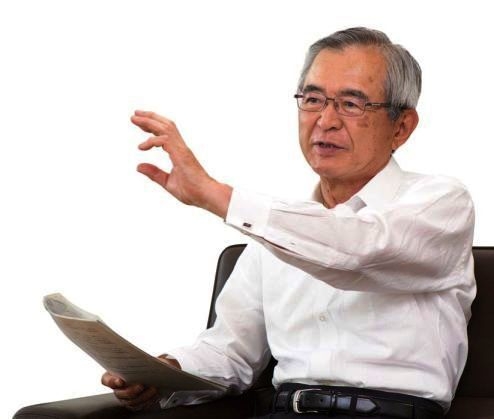
Kawamura: I understand that 60% of the researchers at Kavli Institute for the Physics and Mathematics of the Universe are foreign nationals. Are there many researchers who also hold concurrent positions like you, Dr. Murayama?
Murayama: The majority of the researchers are full-time staff but there are some who hold concurrent positions. I seem to be the first person on the faculty at the University of Tokyo to hold a concurrent position at an overseas institution but this trend is increasing in recent years.
Kawamura: I think this flexibility in regard to human resources at Japanese universities is a very good trend in a global sense. What measures are you taking at the institution to attract first-class researchers from overseas?
Murayama: More than anything, it is important for us make the philosophy of the institution known to people worldwide. Therefore, the first step is to have people understand the unique concept of our institution, that is, to pursue and shed light on the mysteries of the universe through the integration of astronomy, physics, and mathematics and to appeal to those who share the philosophy. Next, it is important to present our conditions of employment properly. Unfortunately, conditions at Japanese universities tend to be less advantageous than those at universities in the United States, and negotiating is essential. Third, we need to establish a support system for non-Japanese staff for their daily life in Japan.
Speaking from my own experience, I experienced some difficulties in trying to work for a Japanese research institution after living in the United States for over 20 years. First of all, I had to open a
bank account at a Japanese bank and follow the necessary procedures for the bank transfer of my salary. I also tried to apply for a credit card but my application was rejected. This was because, despite being a person over the age of 40, I had no record of income in Japan. It was at that time that it hit me how difficult it was to establish everyday life arrangements after my arrival in Japan. For foreign nationals, the situation would be even more challenging. Without a sound support system, we would never be able to hire first-class researchers by simply inviting them to Japan. Information about health insurance is especially important. For Americans, health insurance is the second greatest concern after salary. Therefore, at our institution, we present an introduction to the health insurance system in Japan in English.
Unfortunately, the mutual aid association of the Ministry of Education, Culture, Sports, Science and Technology has only a website in Japanese. For example, if a person needs an operation for appendicitis in Japan, it will cost about 400,000 yen. In the United States, however, it can cost as much as around two million yen. When I tell Americans that the individual’s assumption of medical expense is 30% in Japan, they are surprised that it is so high. However, the cost for the medical treatment itself is inexpensive in Japan, and there is also a reimbursement system for costs for expensive medical treatment. Once they understand how the system works, they feel more at ease about coming to work in Japan. Furthermore, prior to their arrival we try to explain in detail whether we will provide cash or make a bank transfer for the payment of their travel expenses when they come to Japan to visit, and whether we can pay for their taxi charges, etc. It is important to communicate everything in the beginning by writing down the rules.
Kawamura: I am surprised to hear that you are involved even in such minute details.
Murayama: Yes. Minute details are very important, in fact. Another point that needs mentioning is while there are many outstanding Japanese researchers, their ability in giving presentations in an international setting is relatively weak, and it is a fact that Japanese researchers are failing to maintain high visibility at present. Therefore, overseas researchers are concerned that their visibility as researchers may be lost if they move to Japan. To dispel such fear, our institution has established a policy whereby our researchers are not allowed to remain in Japan for more than 11 months a year. In other words, we make it compulsory for our researchers to go abroad for at least one to three months during the year to attend international conferences or engage in joint research at other institutions. This seems to have become an attractive point for overseas researchers. In my case, I spend half of the year in the United States. According to my calculations, I fly at least 300,000 miles a year.
Kawamura: This information is very useful. In the business world, this weakness among Japanese to be more proactive in communication is causing a decline in our competitive edge. Therefore, Hitachi in recent years has been considering having the headquarters of its business divisions transferred overseas. For example, Hitachi Railway System is planning to transfer its headquarters to the United Kingdom. By doing this, we hope to attract diverse human resources.
Murayama: I understand that Hitachi has received a contract for a high-speed railway system in the United Kingdom.
Kawamura: That is correct. It took us 10 years to win this contract. As our next step, we hope to expand our market to the European continent. To achieve this, we have to make quick decisions. If we have to wait for orders to come from Japan, we would fall behind.
Murayama: In the world of research too, the mechanisms for securing a budget are different in every country. Therefore, when we try to work jointly with researchers from other countries, various disagreements tend to arise in its process. What is important in such situations is to properly explain how the two systems differ from each other. In doing so, we need to be aware of differences in culture and language. As an example, allow me to tell you about a certain exchange that took place during a videoconference between the United States and Japan. I was on the U.S. side and the discussion was nearing the final stage. When someone from our side asked “Any other opinions?” the Japanese side replied, “No opinion.” Suddenly, people on the American side began to get angry. While the intention on the Japanese side was to give an affirmative response, in other words, “We agree with you,” the American side took it as a rebuff, meaning, “It’s not worthy of comment.” Since even a little misunderstanding like this can cause discord, I feel that exchanging opinions in a global situation is truly challenging.
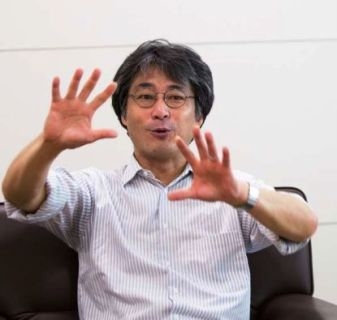
Kawamura: Now that we have touched upon the subject of English, may I ask you how you mastered English?
Murayama: As far as English goes, I never really learned it properly. Thanks to Hitachi, however, I was fortunate to have the opportunity to learn German when my father was posted overseas to Germany for four years. Based on my experience mastering German, I was able to realize that foreign languages and Japanese are organized based on different systems of concepts. It was after finishing graduate school and moving to the United States that I acquired skills in English. I was already 29 years old and nobody could understand my English in the beginning. Once when I tried to ask for some water in a restaurant by saying “Water” with the pronunciation I learned in school, the waiter did not understand. When I tried to pronounce it by saying “Warah” based on my memory of reading this in some book, I was finally served a glass of water. My experiences were very much like this. However, once I was overseas, I had no choice but try to speak English any way I could. What I noticed right away in the United States was that unless you assert yourself, people just assume that you are dumb; not thinking of anything. Therefore, I
had no choice but speak as much as possible. Little by little I seemed to have naturally acquired English skills.
Kawamura: With Japanese business as globalized as it is today, training bilingual staff is essential. Hitachi is committed to globalization and accelerating the development of its overseas business. In this context, mastering foreign
languages is becoming a significant challenge for us. Of course, it is essential for personnel to learn Japanese and know about Japanese culture. At the same time, however, unless we train leaders who are bilingual, it will become more
and more difficult for us to promote the development of our business. I believe that at least by 2020, the time of the Tokyo Olympics, we need to raise the English skills of Japanese in general to the level where everyone is capable of giving directions in English when asked by overseas visitors. We also need to be able to provide appropriate English training to leaders who engage in business overseas.
Murayama: I agree with you completely. English education in Japan has yet to develop in a way where English serves as a tool. Such an enormous amount of time is dedicated to the study of English that it seems such a waste.
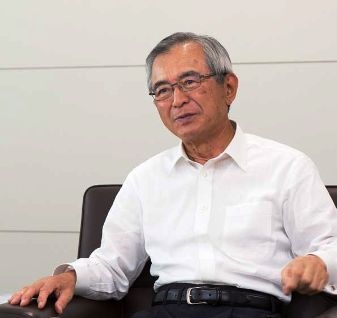
Kawamura: Maintaining the standard of fundamental research and improving general scientific literacy are important issues for Japan. During the Public Science Lecture at The Physical Society of Japan 2014 Annual (69th) Meeting, I remember that you spoke about how the accelerator for exploring the mysteries of the universe is becoming useful in particle beam radiation therapy in the treatment of cancer. Later I gave a lecture on the theme “the mysteries of the universe and the treatment of cancer,” and I believe that what we both had to say in our presentations were pretty much in sync with each other. I feel it is really important to broadly educate the general public about how our fundamental research is applied to various areas of industry and how it is contributing to improving our standard of our living.
Murayama: Like you, I too am always conscious of this need. This is particularly the case in the United States where we are required to explain the broader impact of our research when applying for research funding. The “broader impact” means the impact our research will have on more general areas besides our own research purposes, such as the impact on other fields and on general public. In the United States there is a strong awareness that since taxpayers’ money is being used, the results of research must be returned to society, and I have been taking part in outreach initiatives to be in tune with the world outside of research. As you know, the study of the universe is not something that will be of immediate use to the world. Nevertheless, it is a field that attracts a lot of attention from the general public and, as such, I believe it is an area that can maintain and enhance the interest of children and keep them from losing interest in science. We made a public commitment to this end when we established the institution.
Kawamura: So, perhaps that is also your reason for writing so many bestsellers about the mysteries of the universe in a way that the general reader will find easy to understand, one of these being What is the Universe Made of? (Gentosha Shinsho).
Murayama: That’s right. In addition, our institute was initially a research body established for a limited period. As the director of the institute, when I started consulting with various people in regard to what we could do to keep the institution going, an officer of the Ministry of Education, Culture, Sports, Science and Technology suggested that we make the institute “as prominent as possible” and this became a motivating factor for me. Although I was quite surprised to receive such a suggestion at first, I now realize how important it is to have the general public across a broad spectrum understand our research of the universe through publications such as books and media exposure in newspapers and on television. Otherwise, if there is a general belief that research which serves no purpose in society is irrelevant, our research could get the chop. Of course, when we are able to achieve exciting results we do have a genuine desire to share our research with society at large – much in the same way we might want to share our feelings about an exciting movie we have seen. At the same time, however, there is the hard, cold reality that we need to secure our budget.
Kawamura: I believe it is very difficult to engage in research for a limited period. Our projects at Hitachi are often carried out over a period of about three years. Of course, the content of our projects is based on themes that are related much more to everyday life.
Murayama: That sounds very challenging. Even if projects are closely linked to everyday life, at a company like Hitachi there must be a lot of large-scale projects going on. Another point I would like to mention is that when I engage in outreach activities to inspire interest in my area of specialty, I start by explaining the part my research plays in the bigger context. Doing this also has the advantage of allowing me to objectively review my own research.
Kawamura: When we assign someone to do a job, we also put it into perspective by explaining to that person how that job fits in with the project as a whole, and that we are asking him or her in particular to do this job because without completion of this work the project cannot move forward to the next stage. I believe that by gaining a person’s understanding and motivating him or her in this way at the outset is very important in ensuring work proceeds smoothly.
Kawamura: As you know through your own challenges, it is sometimes difficult to quantitatively demonstrate how fundamental research can be useful to society. I feel that Japan’s competitive edge in the global arena lies in the high quality ofits fundamental research.
Murayama: Recently I was surprised to learn that Japan is the only country in Asia with Nobel Prizes awarded to research conducted in the respective country. Although there are some Chinese and Indian Nobel Laureates, all of them received the prize while working at research institutes in Western countries. After the Meiji Restoration, Japan immediately adopted Western civilization, and not long afterward produced outstanding people like Hantaro Nagaoka and Yoshio Nishina and, during the Showa era, Hideki Yukawa, who received a Nobel Prize. In this sense, I think that Japan is a very impressive country. I believe that the tendency to find joy in delving deeply into the essence of things may be a cultural trait of the Japanese.
Kawamura: I really think so too. Right now the eyes of the world are on China as a country that has been achieving the most remarkable development of any country in Asia, and people wonder whether it is really capable of sustaining this development. If certain factors are found to inhibit China’s development, I believe they would boil down to two: the first is whether China can develop its competence in fundamental research, and the second is whether China can harness the power of its private sector. On reflection, I believe that Japan is satisfying both of these elements and, therefore, I feel that those of us in private sector companies must play a role in linking fundamental research to practical application by drawing on these strengths.
Murayama: That is wonderful indeed. When I read the quotation of Teruo Hiruma, the founder and present chairman of Hamamatsu Photonics mentioned earlier, I was surprised to find that he started up his business solely because he wanted to do research. With that in mind, he made a commitment to invest any profits to be gained from the business in further research. In fact, I heard that his company actually plows back more than half of its profits into research. I believe that such a commitment has led to the development of the photomultiplier tube at Kamiokande*6 which contributed to the observation of neutrinos. My father also went about his research as he pleased, and I believe that openmindedness of Japanese companies contributed significantly to the development of fundamental research in Japan.
Kawamura: Staff at the research centers often give me a hard time when I offer advice from my standpoint as president, saying things like, “How about engaging in research with more tangible outcomes?” However, at the Hitachi Central Research Institute you can find the words of Namihei Odaira, the founder of Hitachi, who referred to a Hang Dynasty poem in stating, “Although our lifetime may not span a hundred years, we have concerns of a thousand years.” These words have become an important guiding principle.
Murayama: I understand that this is Hitachi’s corporate culture. I also understand that they say people who work at the Central Research Laboratory have to be eccentric.
Kawamura: This attitude can also be found in the words of Kumeo Baba, one of the founding members of Hitachi, who once said, “You cannot expect anyone but an eccentric to achieve a discovery of high standard.” This tradition has been passed on to the present day. Speaking of fundamental research, Dr. Murayama, your father worked at Hitachi’s Central Research Laboratory and you are undertaking research at a research institute that is part of a university. Therefore, I would like to ask your opinion regarding the respective roles of a corporation and university as well as their relationship with one another, and how you believe they should be.

Murayama: From the viewpoint of a university attempting to undertake a project, we see a company as a very reliable partner in terms of providing technology and the capacity to achieve the project. For example, in the case of the Subaru Telescope Project,*7 we undertook joint research with a number of companies such as Canon, Hamamatsu Photonics, Kyocera, and Mitsubishi Electric. When we initially presented our ideas, the majority of those from companies would say, “We cannot meet such an unreasonable demand.” As we continued discussions, however, they became more understanding and began to say things like, “We may be able to do something about it,” and the project started to move forward. I cannot help but show due respect for their ability to act. But the bottom line is that it is in the interest of companies to make something that was impossible possible and apply it to business.
In fact, I heard that at Canon the technology established in the course of the development of a camera for the Subaru Telescope was applied to a semiconductor exposure apparatus. We produced a digital camera with one billion
pixels and it weighed almost three tons even after efforts to reduce its weight. Therefore, instead of metal we decided to use ceramics from Kyocera for the body. As a material, this ceramic has a very low thermal expansion coefficient and is both lightweight and strong. This development will also be put to practical use for business purposes in the future. Capitalizing on its experience in the project for the Subaru Telescope, Mitsubishi Electric also became involved in the construction of the ALMA radio telescope that was completed in the Atacama Desert in Chile last year. As these various examples attest, collaboration between industry and academia can be an efficient approach to building mutually beneficial relationships.
Kawamura: At present Hitachi is also applying accelerator technology where we have a track record in delivery to the European Organization for Nuclear Research (CERN), and the High Energy Accelerator Research Organization(KEK). We are also involved in the development of medical equipment such as a particle beam radiotherapy system for the treatment of cancer.
Murayama: Do you use heavy ions?*8
Kawamura: We do use heavy ions as well as protons. While heavy ions are effective, they have significant destructive capability. Therefore, when the cancer is small, we use protons. We also apply cutting-edge technology that we have developed through joint research in medical equipment such as superconducting magnets for MRI and X-ray CT scanners for industrial use. In the future, the technology developed for observing space will become increasingly useful in practical applications in society. It is extremely interesting.
Murayama: We are pleased as well when more examples like these come to light. They are also very important for securing competitive funds.
Kawamura: I believe the application of nuclear fusion technology is also very important. If we accept that nuclear power is an energy source that cannot be excluded within the current energy framework, we need to establish nuclear fusion technology bearing in mind a future where uranium has been exhausted. In the future at Hitachi, we hope to link fundamental and applied research to pursue projects that will serve society.
Notes
Kawamura: By the way, how do you come up with new ideas for research? Do you have any particular approach?
Murayama: Everyone has different ways of thinking and coming up with ideas, so I cannot speak for others. But when I am trying to generate new ideas, I try to know about possible research topics as generally and broadly as possible. Anyone who engages in research will inevitably come to an impasse at some point. When this happens to me, I try to set my research to the side completely for a time and focus attention on other subjects. After a while, I will come to an impasse there too. At that point I go back to the previous problem where I am generally able to break down barriers based on experience I acquired elsewhere. I have gone through this process many times. Single-mindedly pursuing one thing may be the noble path of a researcher but through personal experience I have found it far more productive in many cases to make a clean break and go off and do something else for a time. As a result, I always have some potential projects up my sleeve, and try to maintain a degree of flexibility by trying something else when one thing doesn’t work or picking up ideas from elsewhere.
Kawamura: That’s interesting. And if that is the case, I guess drawing on the insights of people in other areas of expertise could also be useful.
Murayama: Absolutely. Therefore, diversity in the research laboratory is very important. The same problem viewed by people from other areas of expertise or cultures, or people with different methods will appear to them in a totally different light. I get very excited when I discover an approach I had never imagined before.
Kawamura: At Hitachi too, our aim is to create an environment with greater diversity. In addition to overseas staff employed at the research laboratory, three of Hitachi’s twelve directors are foreign nationals at present. The frank views expressed by these directors are quite thought provoking and stimulating for us. Sometimes we are asked questions such as, “Why aren’t you generating greater profits when you have so many first-class people like these?”
Murayama: Bringing diverse people together is beneficial but the situation can be quite challenging when not everybody speaks the same language at the outset.
Kawamura: Indeed, even the terms we use are different. Therefore, when we work in a global environment, it is important to have repeated multilateral discussions. After following long Q&A sessions at Board of Directors’ meetings, I feel confident that we are ready to meet the challenges of the global stage now.
Murayama: I guess universities do not yet feel the same sense of crisis. Every university professor is still the king of his or her own castle. On the other hand, from a corporate perspective, I imagine you may feel a sense of crisis that unless universities change, we will not have human resources capable of conducting business on the global stage.
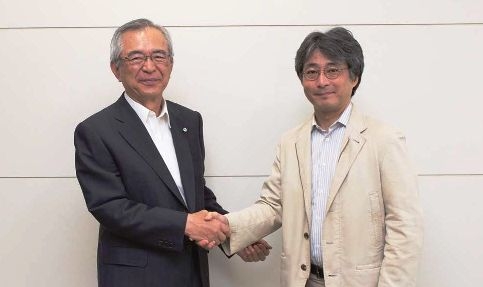
Kawamura: I would like to see universities nurture the development of people who are somewhat more diverse. For example, it would be good to have people who have completed a doctorate, have a special area of expertise and at the same time have a broad education and knowledge in areas such as history, philosophy, and business management. There are many overseas managers who fit this description. In fact, sometimes I am pleasantly surprised when I come into contact with a business manager with a background as a financial specialist who is also well versed in Japanese history or Buddhism. People like these are generally highly capable people. What is your favorite saying, Dr. Murayama?
Murayama: There isn’t any particular one that springs to mind but from time to time I do quote Galileo, who once said, “The universe is written in the language of mathematics.” In other words, unless we become familiar with language of mathematics, we cannot read the “book” of the universe. Sometimes people wonder why mathematics is involved in research projects on the universe. At such times, I use these words as an explanation. At any rate, in the world of the universe and elementary particles, amazingly unusual things happen and, therefore, cannot be described in ordinary words. As I explained earlier, the expansion of the universe is accelerating, and in the world of elementary particles where phenomena such as electrons seeping through impassable walls due to tunnel effects occur, we are literally lost for words when we encounter such strange phenomena. The vocabulary humans use has developed from everyday life experiences and cannot be used to describe the world of the universe and elementary particles. When ordinary words fail, we have no choice but to describe phenomena in much more abstract terms. That is where mathematics offers a means of expression. And its use is not limited to the study of the universe, but is relevant in any world. When we branch out into a new trajectory, we cannot describe our work in conventional words. Therefore, new words become necessary to indicate a new concept or direction. Conversely, I believe people who discover new words are people who are capable of creating new ideas and concepts and moving forward to the next step in conceptual thinking. In the research of the universe and elementary particles, we have been carrying out our work using mathematical language. I believe that this has enabled us to create new knowledge.
Kawamura: I see your point. This is exactly what a person like Galileo was alluding to. Dr. Murayama, you have already achieved remarkable success as a researcher. Please tell us about a dream you would like to see come true in the future.
Murayama: You said I achieved “remarkable success” but from my own point of view, I see this as the equivalent of a two-base hit or a triple at the most. I have yet to hit a grand slam, and that is exactly what I would like to do. In my mind, hitting a grand slam means achieving the kind of milestone whereby the presence and work of one researcher makes a difference in the world. In other words, without this person and this person’s research, the world would not have progressed in such a direction. In this context, I believe I am still a younker.
Kawamura: To achieve your goal, I imagine you will need to further develop your institute in various ways.
Murayama: That is correct. As its director, while continuing my own research, I believe it is necessary for me to establish a framework that will secure the necessary human resources and funds to enable ongoing research.
Kawamura: I encourage your efforts to do so. Thank you taking the time out of your busy schedule to be here today.
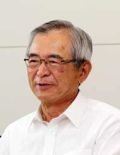
Af ter receiving hi s PhD from the Unive r s i t y of Tokyo, Dr. Murayama has held various positions successively including research associate at the Tohoku University Graduate School, postdoctoral fellow at Lawrence Berkeley National Laboratory, and professor at the University of California, Berkeley. At present, Dr. Murayama is engaged in cuttingedge research on particle physics as the director of Kavli Institute for the Physics and Mathematics of the Universe at the University of Tokyo. In this interview, we asked Dr. Murayama to discuss details of his very interesting research which uses the International Linear Collider towards the aim of answering questions such as: What is the universe made of ? What are the laws that govern the universe? What is the destiny of the universe? As the director of Kavli Institute, Dr. Murayama has been promoting various initiatives to attract outstanding minds from all over the world, which reminded us of the importance of diversity in a context of globalization. Despite the remarkable success he has achieved as a scientist to date, he looks forward to achieving even more outstanding benchmarks as he continues his efforts in his work as director and in outreach activities. We are deeply impressed by his commitment.